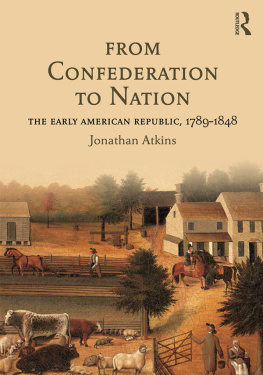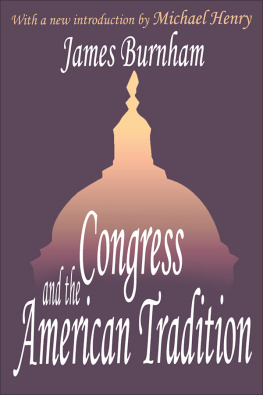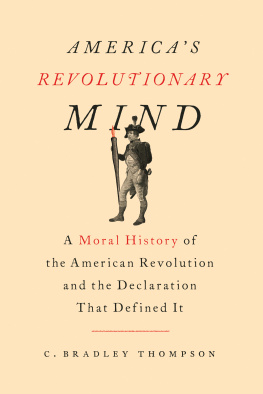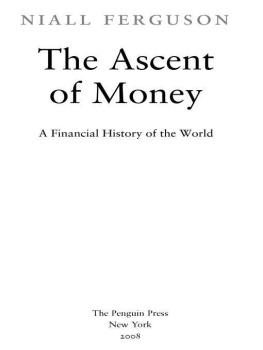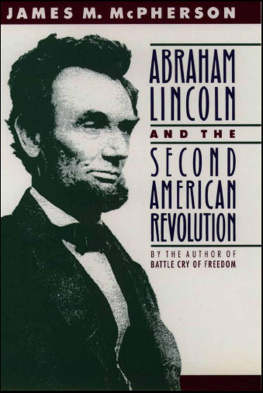PRINTED BY THE SEEMAN PRINTERY, DURHAM, N. C.
Preface
THIS book is essentially history rather than economics. It grew out of general reading in contemporary sources. Public finance entered into every discussion of political or constitutional issues, but the significance of what I read was often obscure to me. When books on financial history were not enlightening, I was led to explore the subject in an effort to comprehend.
The work was begun under the direction of Professor Merrill Jensen of the University of Wisconsin, who has given me his valuable criticism and encouragement at every stage of the research and writing. I have gained much from intellectual communion with my colleague, Whitney Bates, who is an expert on Revolutionary finance and possibly the one person who will read these pages without feeling at any point that the meaning is obscure. In that critical hiatus likely to occur between research and scholarly publication, this book owes much to past and present members of the council and staff of the Institute of Early American History and Culture, particularly Lester J. Cappon, who had confidence in its ultimate merit. James Morton Smith and Frederick Hetzel greatly improved the manuscript in editing it for publication. The Institute twice granted financial aid for research.
Librarians have been unfailingly cooperative. I wish particularly to thank the directors and staffs of the Manuscript Division of the Library of Congress, the Fiscal Records Section of the National Archives, the Division of Public Records of the Pennsylvania Historical and Museum Commission, the Massachusetts Historical Society, the American Philosophical Society, the Pennsylvania Historical Society, the Maryland Hall of Records, the New York Public Library, the New York Historical Society, the American Antiquarian Society, and the William L. Clements Library. A grant from the University of Maryland supplied funds for typing the manuscript.
CONTENTS
PART I
THE REVOLUTION
PART II
NATIONALIST ASCENDANCY, 1781-1783
PART III
POSTWAR ERA
PART IV
NATIONAL PUBLIC FINANCE
List of Tables
- Treasury Disbursements and Allocations Through 1781
- Emissions of Continental Currency, 1775-81
- Depreciation of Old Continental Currency, 1777-81
- Old Money Requisitions to 1780
- State Credits to 1780
- Loan Office Returns, 1777-81
- Foreign Aids to 1780
- Federal Income to 1780
- Indent Account, 1785-89
- Receipts and Expenditures, Nov. 1, 1784 to 1789, Excluding Indents -237
- Federal Debt in Massachusetts: Concentration
- Federal Debt in Massachusetts: Transfer
- Federal Debt in Maryland: Concentration
- Federal Debt in Maryland: Transfer
- Public Debt in Pennsylvania: Concentration
- Public Debt in Pennsylvania: Transfer
- Federal Debt in Rhode Island: Concentration
- Federal Debt in Rhode Island: Transfer
- Subscriptions at the Treasury: Concentration
Introduction
The situation of our public debts and the very great embarrassments which attended all our concerns on that account, were the principal causes, of that revolution which has given us the Constitution.
Letter on Hamiltons funding Proposals dated New York, Feb. 3, 1790.
OUR conception of Revolutionary finance was until recently based on the writings of nineteenth-century scholars who were engaged in the defense of sound money against silverites and inflationists. Because the keystone of public finance in early America was fiat money, they enlarged upon its failures as an object lesson for their own generation. Delving into the colonial past, they exposed the currency depreciation that occurred in New England and the Carolinas; for them this sufficed as a general description of colonial public finance. The denouement was the rise of the Federalists and Alexander Hamilton, who rescued the country from its errors.
Events of the twentieth century have undermined the position these writers sought to defend. Now that fiat money and managed economies are the rule, a more favorable view of colonial finance is possibleone that takes cognizance of its successful operation in many colonies and its contribution to the economic growth of the country. Seen in the context of later wars and revolutions and not as a lesson in political economy, the financial expedients to which the United States resorted during the Revolution appear reasonable if not inevitable. The alteration in viewpoint is essential to a knowledge of the early history of the nation. The political issues of the day, which turned largely on the question of public finance, lack meaning if the typical modes of finance pursued from colonial times are regarded only as inept blunders and not as a viable system adapted to Americas agrarian circumstances.
Public finance was a more controversial subject in the eighteenth century than it is now. The way a government collects and spends money always confers differential benefits upon individualsa fact well understood by eighteenth-century Americans, who fully appreciated the function of economic interest in politics. But they reserved for economic factors a higher role in shaping the general institutions of society. The power of the purse was to them the determinant of sovereignty, and upon its location and extent depended the power of government, the existence of civil rights, and the integrity of representative institutions. Their basic premise was that popular control of taxation ensured the rights of the citizen; but power over taxation was also an instrument with which to enlarge the sphere of private liberty against the authority of the state. Conscious of pursuing the traditions of Parliament in its struggle against the Crown, the Americans as colonists manipulated their control of taxation to wrest authority from British governors. After independence, they tried to safeguard the sovereignty of their new states under the Articles of Confederation by denying Congress the right to tax.
The war for independence, however, gave birth to Congressional functions requiring money expenditures and, most important, created a large domestic and foreign debt. How the debt was to be paidwhether by the states or by Congressbecame the pivotal issue in the relations between the states and the nascent central government. Until 1787 the movement to strengthen the Union was almost wholly directed towards settling the debt upon Congress and giving Congress the right to collect taxes. With the adoption of the Constitution and the enactment of the Hamiltonian funding program in 1790, the movement was consummated: Congress acquired both debts and taxes.
Disputes over public finance also expressed divergent social philosophies. The broadest cleavage in American society was that which ranged mercantile capitalists and their allies against agrarians both great and small. In colonial times the provinces had devised methods of public finance suited to their predominantly agrarian circumstancesmethods which included fiat money, agricultural credit, and certain cheap and painless ways of discharging public debts. The alternative, which was embraced by the mercantile capitalists surging to the fore with the Revolution, consisted of sound money backed by specie, funded debts, government banks, and sanctity of contract. Apart from the question of whether Congress or the states should collect taxes and assume mastery of debts, there was a further question as to the methods by which finance should be conducted and debts paid. Any action had a differential effect upon social groups, not only in its immediate economic consequences, but in its compatibility with their ways of life.


